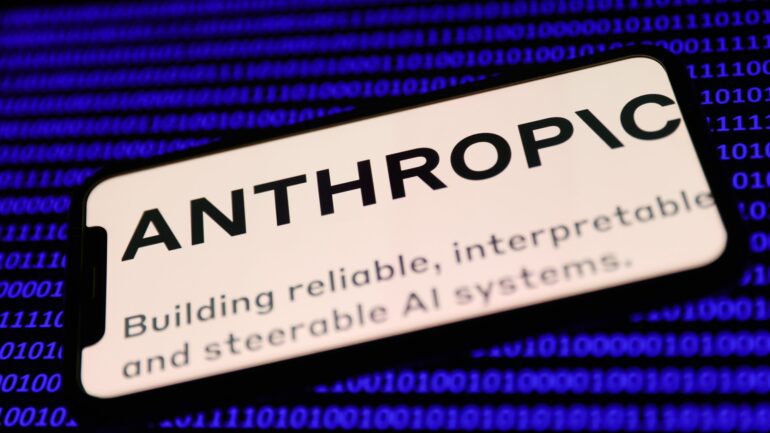TL;DR:
- Anthropic introduces Claude Instant 1.2, an upgraded version of its entry-level LLM.
- Claude Instant 1.2 incorporates strengths from flagship model Claude 2, showcasing significant gains in math, coding, reasoning, and safety.
- Internal testing reveals improved coding benchmark scores (58.7% vs. 52.8%) and math question accuracy (86.7% vs. 80.9%).
- Claude Instant 1.2 generates longer, more structured responses, improves quote extraction and enhances multilingual capabilities.
- Enhanced resistance against hallucination and jailbreaking attempts, contributing to higher accuracy and security.
- Context window of 100,000 tokens aligns with Claude 2’s capabilities for more coherent interactions.
- Anthropic’s ultimate goal is a revolutionary AI self-teaching algorithm for virtual assistants.
- Claude Instant 1.2 competes with entry-level models from OpenAI, Cohere, and AI21 Labs.
- Anthropic has raised $1.45 billion, seeking $5 billion to realize its ambitious chatbot vision.
- Claude Instant powers platforms like Quora’s Poe, DuckDuckGo’s DuckAssist, and Notion AI.
Main AI News:
In a bold move showcasing its ongoing commitment to advancing artificial intelligence, Anthropic, the brainchild of former OpenAI executives, has introduced an upgraded rendition of its more accessible language model (LLM), the Claude Instant. This new iteration, coined Claude Instant 1.2, amalgamates the virtues of Anthropic’s recently acclaimed flagship model, Claude 2.0. The result? A leap forward in potency with remarkable enhancements in mathematical prowess, coding aptitude, logical reasoning, and system safety, as affirmed by Anthropic. Rigorous in-house evaluations substantiate Claude Instant 1.2’s supremacy, with a remarkable 58.7% coding benchmark achievement compared to Claude Instant 1.1’s 52.8%, and an even more impressive 86.7% proficiency in solving mathematical queries in contrast to Claude Instant 1.1’s 80.9%.
In a recent blog exposé, Anthropic enthusiastically divulged, “Claude Instant’s narrative generation acquires greater length, heightened structural coherence, and adherence to formatting commands.” The metamorphosis extends beyond, as Claude Instant 1.2 boasts amplifications in quote extraction, multifaceted linguistic capabilities, and precision in answering complex inquiries.
Further fortifying its standing, Claude Instant 1.2 showcases reduced susceptibility to delusional outputs and exhibits elevated resistance against attempts at system intrusion—claims put forth unequivocally by Anthropic. The labyrinthine world of expansive language models occasionally gives rise to “hallucinations,” where the text generated lacks factual basis or coherence. On another front, the concept of jailbreaking, an artful technique for skirting safety protocols, faces staunch opposition from Claude Instant 1.2.
Prominently, Claude Instant 1.2 introduces a contextual window mirroring Claude 2.0’s dimensions—an impressive 100,000 tokens. This window of context alludes to the textual corpus the model processes before extending its textual contributions. Tokens, in their essence, represent elemental units of text (like deconstructing “fantastic” into “fan,” “tas,” and “tic”). Both Claude Instant 1.2 and Claude 2.0 exhibit proficiency in analyzing a staggering 75,000 words—roughly equivalent to the length of “The Great Gatsby.”
An inherent trait of models with expansive contextual windows is their reduced inclination to lose track of recent conversational nuances. This retention capacity fosters more meaningful and coherent interactions.
As previously highlighted, Anthropic’s vision is resolute in creating a groundbreaking algorithm for autonomous AI learning—an aspiration resonating through their overtures to potential investors. This transformative algorithm holds the promise of birthing virtual aides adept at email correspondence, research endeavors, and even artistic and literary composition. A glimpse of this prospect has materialized through monumental feats like GPT-4 and analogous grand-scale language models.
However, Claude Instant 1.2 is not the cornerstone of this futuristic algorithm. Rather, it represents Anthropic’s competitive retort to parallel entry-level propositions from industry giants like OpenAI and emergent startups, including Cohere and AI21 Labs. Each entity strives to harness the potential of text and, in certain cases, image generation AI systems.
To date, Anthropic’s ascendancy, commencing in 2021 under the stewardship of former OpenAI Vice President of Research, Dario Amodei, stands marked at an impressive $1.45 billion valuation within the single-digit billions. Though substantial, this financial feat falls shy of their projected requirement—$5 billion in the ensuing biennium—to usher in the coveted chatbot of their blueprint.
Presently, Anthropic takes pride in cultivating a robust clientele and collaborative network. Noteworthy associates include Quora, rendering access to Claude and Claude Instant through the subscription-based generative AI marvel, Poe. Not to be overshadowed, Claude empowers DuckDuckGo’s novel feature, DuckAssist—an interactive search resolution tool augmenting the efficacy of straightforward queries, synergizing seamlessly with OpenAI’s ChatGPT. Another feather in Anthropic’s cap is Claude’s integral role in Notion AI, augmenting the Notion workspace with advanced AI writing assistance and seamless integration.
Conclusion:
Anthropic’s launch of Claude Instant 1.2 represents a remarkable stride in refining AI language models, bridging the gap between entry-level and flagship models. The incorporation of Claude 2’s strengths and improvements across various dimensions underscores Anthropic’s commitment to staying competitive in an evolving market. The heightened accuracy, security features, and coherency achieved with this new version set a benchmark for similar offerings in the industry. As Anthropic continues to secure investments and expand partnerships, its vision of AI self-teaching algorithms for practical applications remains an intriguing prospect, potentially reshaping the landscape of virtual assistance and content generation.

